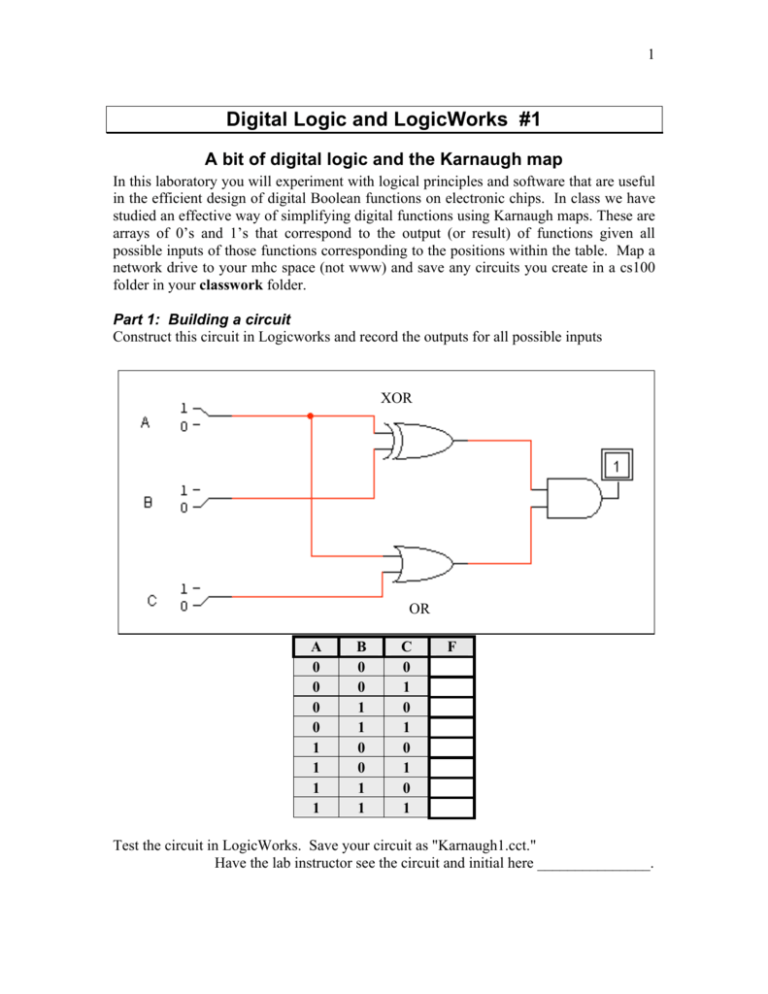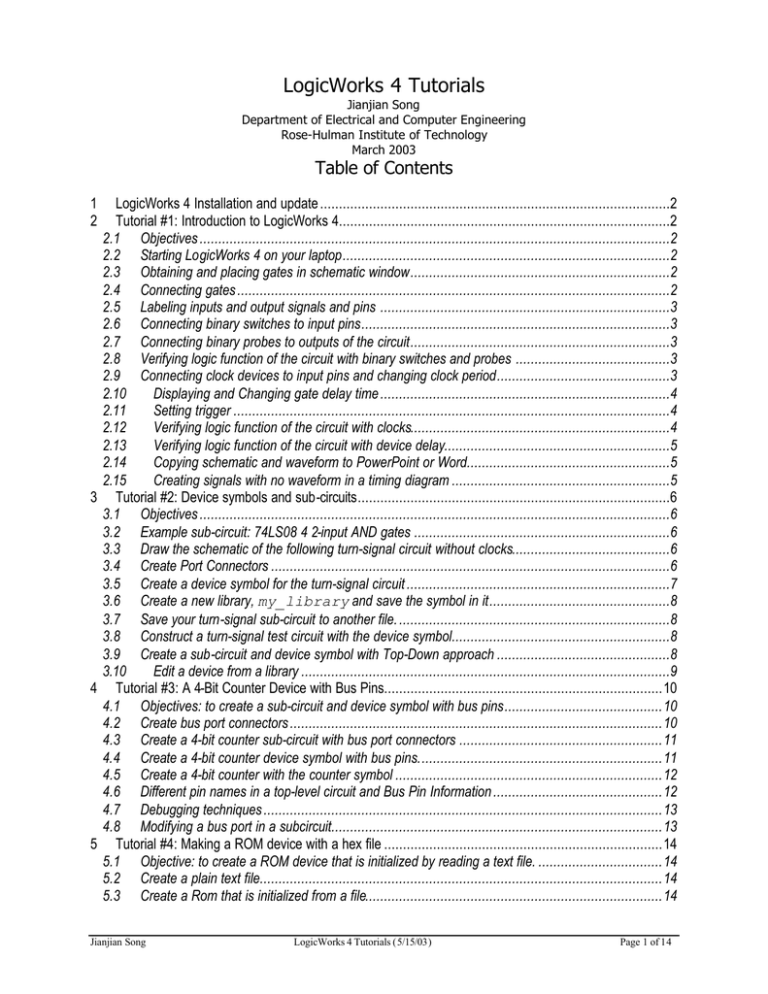

The Exclusive-Or (EX-OR) gate network and its symbol are shown in Figure 2. Show by simulations that the circuit is equivalent to the circuit in Figure 1.Į. Draw an equivalent circuit of the network using a minimum number of NAND gates (use 2-input NAND gates only). See page 160 for a discussion of the even-driven nature of the simulator.ĭ. An event is the changing of the value of any signal.

To actually make the timing diagram activate, you need to cause an event to happen. (Note that if the label is not properly attached, no signal is shown in the timing diagram window.) Repeat the testing as in step b), and observe the timing diagram. Label the inputs and the output (ref: Naming a signal, pg. Test the truth table by setting the switches to all possible combinations.Ĭ. 55) and a binary probe to the output (ref: pg. Connect a binary switch (from the primio library) to each input (ref: pg. Draw the network using the LogicWorks software, specifically using the primgate library. Derive the truth table for the logic gate network shown below in Figure 1:ī. Read the remainder of chapter 4, which has more useful details on schematic entry and simulation.Ī. Do the "five minute" tutorial on pages 47-63.Ĥ. Read through the "User Interface" chapter, page 27 for Windows and page 37 for Macintosh.ģ.
Logicworks 5 draw install#
Install the logicworks software onto your computer, following the instructions on page 13 for Windows machines, and page 18 for Macintosh machines.Ģ.
Logicworks 5 draw manual#
Note: All page references are to the manual for LogicWorks 3.ġ. Bring the results of this exercise to that lab with you, as it will be checked as part of your preparation. This exercise should serve as an introduction to Lab #1. Printing out schematics and timing diagrams.

Entering stimulus waveform using timing diagrams.Ĥ. Observing behaviour using timing diagrams.ģ. By the end of this exercise you should be familiar with:Ģ. Objective: To introduce the LogicWorks simulator. ECE241F Logicworks exercise ECE241F Logicworks exerciseĭepartment of Electrical and Computer Engineering


 0 kommentar(er)
0 kommentar(er)
